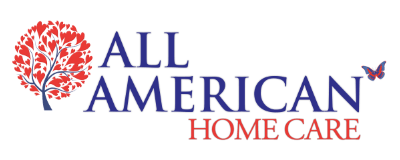Walking After Stroke: A Comprehensive Guide to Regaining Mobility
A stroke impacts the brain. This often leads to physical challenges. For many stroke patients, difficulty walking is a primary concern. They may experience weakness. They might have coordination issues.
The goal of walking after stroke is crucial. It’s about regaining freedom. It’s about restoring independence.
Table of Contents
Understanding Difficulty Walking After Stroke
When a stroke occurs, it damages the brain affected by the interruption of blood flow. This damage can weaken muscles. It can disrupt communication between the brain and limbs. This directly causes difficulty walking. Common issues for stroke patients include:
- Weakness or Paralysis: One side of the body may be weaker. It might be paralyzed. This is called hemiparesis or hemiplegia.
- Balance Problems: The ability to maintain stability is often impaired. This increases the risk of falls.
- Spasticity: Muscles may become stiff. They can be difficult to move. This makes walking rigid.
- Foot Drop: The front of the foot may drag. This can cause tripping.
- Sensory Changes: Numbness or altered sensation can affect awareness of the ground.
These challenges make walking after stroke a complex task.
The Role of Early Intervention in Stroke Rehabilitation
Starting stroke rehabilitation early is vital. It often begins within days post stroke. Early intervention leverages the brain’s neuroplasticity. This is the brain’s ability to rewire itself.
- Inpatient Rehabilitation: Many stroke survivors start here. They receive intensive, daily physical therapy and other therapies. The focus is on regaining basic mobility.
- Outpatient and Home-Based Rehabilitation: Once stable, therapy continues. Home-based therapy is convenient. It integrates exercises into the patient’s actual living environment. This helps improve walking in familiar settings.
Key Therapies to Improve Walking
A comprehensive stroke rehabilitation plan is essential. It aims to improve walking. It focuses on specific motor skills.
Physical Therapy and Gait Training
Physical therapy is fundamental for walking after stroke. A physical therapist will design targeted exercises.
- Strength and Balance: Exercises build muscle strength. They improve core stability. This is key for walking after stroke.
- Gait Training: This involves practicing walking patterns. It often uses parallel bars. It can involve treadmills. The goal is to restore a natural gait.
- Weight-Bearing Exercises: These help activate muscles. They strengthen bones. This prepares the body for standing and walking.
- Functional Exercises: Therapists incorporate real-life movements. This might include stepping over objects. It could involve navigating uneven surfaces.
Occupational Therapy
While physical therapy focuses on the mechanics of movement, occupational therapists help stroke patients apply these skills to daily activities.
- They integrate walking into everyday tasks. This might include moving around the kitchen. It could involve getting to the bathroom.
- They recommend adaptive equipment. Walkers, canes, or braces can help improve walking safety.
Functional Electrical Stimulation (FES)
FES is a technology that can significantly help walking after stroke.
- It uses mild electrical currents. These stimulate weakened muscles.
- FES can help lift a foot with foot drop. It can activate leg muscles during walking.
- A physical therapist often uses FES as part of a comprehensive gait training program.
Balance and the Fear of Falling
Difficulty walking often comes with balance issues. This leads to a significant fear of falling.
- Balance Training: Specific exercises challenge stability. This includes standing on one leg. It can involve shifting weight. This builds confidence.
- Safety Education: Therapists educate stroke survivors and family members on fall prevention. This includes modifying the home environment.
- Fear of Falling: This psychological barrier is real. Addressing it is crucial. Small, achievable goals help rebuild confidence. A support system is vital here.
The Importance of a Strong Support System
No stroke survivor should walk this path alone. A strong support system is invaluable.
- Family Members: They provide encouragement. They assist with exercises. They offer emotional comfort.
- Caregivers: Professional caregivers can ensure consistency. They provide safe assistance with daily activities.
- Support Groups: Connecting with other stroke survivors can reduce feelings of isolation. It offers shared experiences. This helps manage the recovery timeline.
Long-Term Recovery and Continued Progress
Walking after stroke is a long-term commitment. Recovery doesn’t stop after initial rehabilitation.
- Progress can continue for many months after a stroke. It can even happen years later.
- Consistency in exercises is vital. Continuing practiced movements helps reinforce neural pathways.
- The recovery timeline varies greatly. Patience and persistence are key.
- The ultimate goal is for the stroke survivor walking journey to lead to the ability to walk independently or with minimal assistance. This greatly enhances their quality of life.
Preventing Falls
Reducing the risk of falls is paramount. Falls can lead to new injuries. They can cause a loss of confidence.
- Home Safety Modifications: Removing throw rugs. Ensuring good lighting. Installing grab bars in bathrooms.
- Appropriate Footwear: Wearing sturdy, non-slip shoes.
- Assistive Devices: Using walkers or canes as recommended by a physical therapist.
- Supervision: For individuals with significant difficulty walking, supervision by a caregiver can prevent falls.
Step by Step Towards Greater Independence
Walking after stroke is a challenging but achievable goal. It requires a dedicated stroke rehabilitation plan. It needs consistent effort. Most importantly, it benefits from a strong support system.
With the right physical therapy, gait training, and professional home care, stroke survivors can significantly improve walking. They can reduce their fear of falling.
All American Home Care is committed to empowering stroke patients. We help them take each step towards greater independence and a higher quality of life.
Related Articles:




